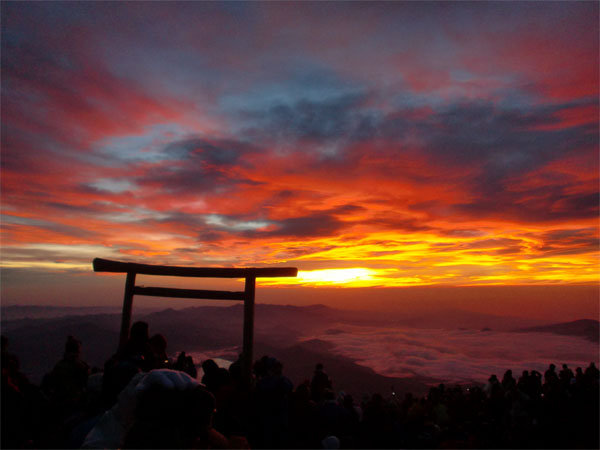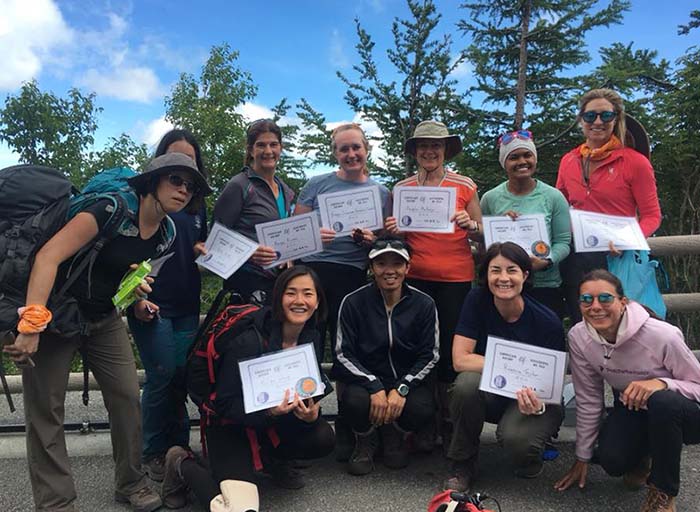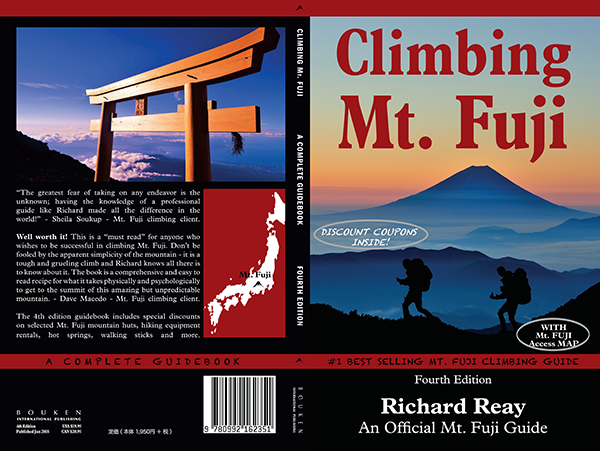
- Follow My Tokyo Guide Adventures on WordPress.com
Mt.Fuji Climbing Guidebook
-
Join 1,985 other subscribers
My Tokyo Guide
Picture Gallery
Follow me on Twitter
My TweetsCategories
- Fireworks (3)
- Japan Photos (75)
- Latest News (95)
- Mt. Fuji (21)
- Mt. Fuji Climbing (2)
- Tokyo (126)
- Tokyo Top Ten (22)
- Video & Links (40)
-
Recent Posts
Top Clicks
- None
Blog Stats
- 175,166 hits
Top Posts & Pages
Archives
- October 2020 (1)
- July 2020 (1)
- April 2020 (1)
- February 2020 (1)
- April 2019 (1)
- March 2019 (1)
- February 2019 (1)
- January 2019 (1)
- December 2018 (1)
- June 2018 (1)
- May 2018 (1)
- April 2018 (1)
- January 2018 (1)
- November 2017 (1)
- October 2017 (1)
- June 2017 (1)
- May 2017 (1)
- March 2017 (1)
- December 2016 (1)
- November 2016 (1)
- July 2016 (1)
- June 2016 (2)
- April 2016 (1)
- March 2016 (2)
- January 2016 (1)
- October 2015 (1)
- September 2015 (1)
- August 2015 (1)
- July 2015 (9)
- June 2015 (9)
- May 2015 (12)
- April 2015 (17)
- March 2015 (9)
- February 2015 (2)
- January 2015 (1)
- November 2014 (1)
- October 2014 (1)
- September 2014 (4)
- July 2014 (3)
- June 2014 (3)
- May 2014 (1)
- April 2014 (1)
- March 2014 (2)
- February 2014 (1)
- January 2014 (1)
- December 2013 (1)
- November 2013 (2)
- September 2013 (1)
- August 2013 (1)
- July 2013 (3)
- June 2013 (1)
- May 2013 (1)
- April 2013 (2)
- March 2013 (5)
- February 2013 (2)
- January 2013 (3)
- December 2012 (2)
- November 2012 (3)
- October 2012 (2)
- September 2012 (1)
- August 2012 (2)
- July 2012 (3)
- June 2012 (3)
- May 2012 (2)
- April 2012 (1)
- March 2012 (4)
- February 2012 (3)
- January 2012 (5)
- December 2011 (5)
- November 2011 (3)
- October 2011 (3)
- September 2011 (2)
- August 2011 (1)
- July 2011 (4)
- June 2011 (2)
- May 2011 (5)
- April 2011 (8)
- March 2011 (19)
- February 2011 (5)
Climbing Mt. Fuji Tours

Cool Japan



Pages
Cloud Tags
- 1-Day Mt. Fuji Climb
- 2 Day Mt. Fuji Hike
- 10 Reasons to Visit Japan
- 2014 Mt. Fuji Climbing
- 2015 Mt.Fuji Climbing Tours
- Best Cherry Blossom Views
- Bullet Train
- Cherry Blossom
- Cherry Blossom Forecast
- Cherry Blossom Season in Japan
- Cherry Blossom Tours
- Climbing Mount Fuji
- Climbing Mt. Fuji
- Climb Mt. Fuji
- day tour
- Geisha
- Hakone
- Hiking
- Hiking in Japan
- Hiking Mt. Fuji
- Hiroshima
- Hiroshima Cycle Tours
- Hokkaido
- Hokkaido Flight Packages
- Hokkaido Flower Tours
- Hot Spring Tours
- Japan
- Japan Autumn Tours
- Japan Cherry Blossom Tours
- Japan Culture
- Japanese Food
- Japan Flower Tour
- Japan Hot Springs
- Japan Mt. Fuji
- Japan Ski Packages
- Japan Souvenirs
- Japan tour
- Japan travel
- Japan Tsunami aid and relief
- Kusatsu Onsen
- Kyoto
- Kyoto Dinner
- Kyoto Tour
- Maiko
- Mountains
- Mount Fuji
- Mount Fuji Climb
- Mount Fuji Climbing
- Mount Fuji Climbing Tours
- Mount Fuji Hike
- Mt
- Mt. Fuji
- Mt. Fuji Climb
- Mt. Fuji Climbing
- Mt. Fuji climbing routes
- Mt. Fuji Climbing Tips
- Mt. Fuji Climbing Tours
- Mt. Fuji Climbs
- Mt. Fuji Climb Tour
- Mt. Fuji day tour
- Mt. Fuji Guidebook
- Mt. Fuji Summit
- Mt. Fuji Sunrise
- Mt. Fuji Tours
- Mt. Fuji Viewing
- Mt. Takao Hiking Tours
- Naeba Ski Packages
- Nagano
- Nagano Ski Packages
- Nagano Snow Monkeys
- Nagano Tours
- Niigata Ski Packages
- Onsen
- Onsen Tours
- outdoors
- Sakura
- Sakura Season
- Sapporo
- Sapporo Snow Festival
- Shimanami Kaido Cycle Tours
- Shinjuku
- Snow Monkeys
- Snow Monkey Tour
- Snow Monkey Tours
- Sumo
- Sumo Tournament
- Sumo Westling
- Takayama
- Tokyo
- Tokyo Bay Cruise
- Tokyo Bay Dinner Cruise
- Tokyo Cherry Blossom
- Tokyo Sightseeing
- Tokyo Tour
- Top Tokyo Cherry Blossom Views
- tour
- Travel
- Tsukiji Fish Market
- Visit Japan
- Yakatabune
Mt. Fuji GuideBook

Comments
Mt. Mitake Tokyo’s Hidden Nature
Located west of Tokyo in the Ome City district is the scenic Mitake Mountain. Mt. Mitake is a Hidden Natural wonder full of mystical Tengu Goblins and Beautiful Mountain Waterfalls, this is by far the most beautiful nature hike anywhere in the Tokyo area.
There are numerous trails, and connecting routes to nearby Mountains like Mt. Otake and Mt. Hinode. Within Mt. Mitake nature trails there are some surreal natural must see sites to visit that include the following;
- 1. Tengu Goblins’ Seat Cedar Tree
- 2. Tenguiwa Rock
- 3. Nanayo-no-Take Waterfalls
- 4. Rock Gardens
- 5. Ayahiro-no-Take Waterfalls











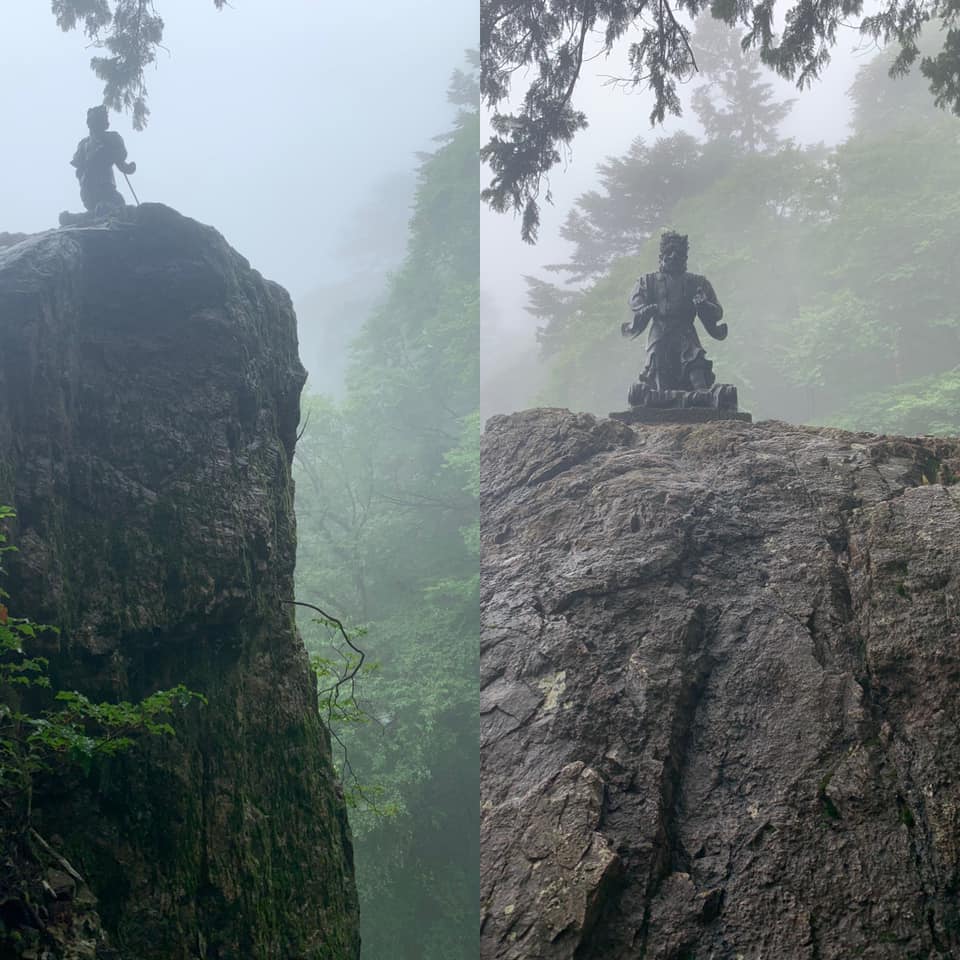

Hard to believe you are still in Tokyo area, the mystical nature seems always too beautiful and dreamlike. Mitake Mountain is a must do hike while you are in Tokyo.
For more on Tokyo Best Hiking spots please contact us at info@mytokyoguide.com
#Mt.MitakeHike
Posted in Tokyo
Tagged Ayahiro-no Waterfalls, Hiking, Japan, Mountain Mitake, Mountains, Mt. Mitake Rock Garden, Mt.Mitaka, Mt.Mitaka Hike, mytokyoguide, Nanayo-no Waterfall, nature, outdoors, Rock Garden Hike, Tengu Goblin's Tree, Tokyo Best Hiking Trail, Tokyo Hikes, Tokyo Hiking, Tokyo HIking Tours
Leave a comment
How to Climb Mt. Fuji?
Ultimate Guide to Climbing Mt. Fuji
Mt. Fuji is one of the most famed distinctively cone-shaped volcanoes in the world and the most recognizable symbol of Japan. Many trekkers and tourists are adding a Mt. Fuji climb to their Ultimate Japan Bucket List. In fact, several tourists now visit Japan Just to climb Mt. Fuji, making Mt. Fuji one of the most climbed mountains in the world.
However, the distinctive cone shape features of Mt. Fuji also delivers a challenge for many climbers who are not prepared mentally or physically for the climb. One of the unique features of climbing a volcanic cone is almost instantly after beginning your Mt. Fuji climb, you start trekking uphill. Mt. Fuji Fitness Guide
Mt. Fuji is categorized by strict altitude gains, swiftly shifting weather and sharp inclines. There is a 15~20 degrees change in temperature from the base of Mt. Fuji to the summit of Mt. Fuji. Mt. Fuji current Weather Forecast: (The best local resource for Mt. Fuji weather information in Japan is the Japan Meteorological Agency) The climb is unlike any high-altitude quest most novice climbers will ever encounter. So, do not misjudge the climb. How Hard is it to Climb Mt. Fuji?
This climb varies slightly depending on which route you select; (There are four different hiking Trails to the Summit of Mt. Fuji). Nonetheless, no matter which trail you take, you will be hiking uphill for almost all of your journey. Questions about the Mt. Fuji Climbing Routes: for example: Which Mt. Fuji climbing route is the easiest? Which Mt. Fuji climbing route has the best views? Which route is the most challenging? Safest? etc. see the following link or Mt. Fuji routes explained: Which Mt. Fuji Climbing Route is the Easiest?
Many trekkers also ask: When Can I climb Mt. Fuji? The Official Mt. Fuji Climbing season is from July 1st to Sept 10th, depending on the route you select this varies slightly.
Trail Note: There was a delay in the opening of the 2019 Yoshida Route and Subashiri climbing Routes (Both routes merge from the 8th station upwards) due to a rocks slide near the summit of Mt. Fuji Delay in opening of 2019 Climbing Season due to rock slide.
Can Mt. Fuji be climbed in the Off-season?
Contrary to general belief, climbing Mt. Fuji outside the official climbing season is permissible. Upon reaching a Fuji trailhead in the off-season however, one will face signposts that say that the trail is closed. These signs are an indirect way of saying, “climb Mt. Fuji at your own risk”. It is best to note that the risk of climbing Fuji in the off-season increases substantially as compared to climbing during the official season and we only recommend you climb in the off-season with a professional guide. However, climbing just before or just after the climbing season I.e. (June, September and October) is actually preferred by some hikers who like to avoid the large crowds. (See Mt. Fuji Off-Season Climbing Dates) and Off-Season Climbing Itinerary.
Can Mt. Fuji be Climbed in 1-Day?
A one-Day hike to the summit of Mt. Fuji is possible with an early start However, we recommend only fit experience hikers attempt this endeavor as it requires high lever of strength and endurance. Nevertheless, a 1-Day Mt. fuji hike does evade the sunrise urgency and staying the night at a Mountain hut completely, plus reaching the summit around midday allows you to fully enjoy the surrounding views while appreciating the warmest stage of the day.
What is the best way to Access Mt. Fuji?
There are numerous ways to access Mt. Fuji from Tokyo and the surrounding area. Depending on where you are coming from Mt. Fuji can be access by Bus, Train and Bullet Train. (See May Below) Taking the bullet train is unquestionably the quickest and safest way to get to Mt. Fuji. The Bullet Train also eliminates all the daily traffic jam headaches and highway delays and extremely convenient if you have a Japan Rail Pass.
Note: it normally takes about 2hrs for a one-way transfer from Tokyo to Mt. Fuji depending on your start and end point. However normal is uncommon, as there is almost continuously congestion on the highways caused by general daily overcrowding. Especially on the holidays, breaks or any time during the summer the traffic from Tokyo to/from Mt. Fuji can be awfully slow adding hours to the drive time and delaying your climb/tour schedule, sometimes taking as long as 3-4 hours in peak jam situations.
Starting and ending your climb at Shin-Fuji Station is the fastest logical choice. From Shin-Fuji Station you can easily access Bullet Trains South to Kyoto or Osaka, or North to Tokyo or even to Hakone.
What hiking gear should I bring for a Mt. Fuji Climb?
Having the appropriate hiking gear significantly enhances the characteristic of your experience. The better equipped and the better quality your gear is, the greater chance your excursion will be safe and comfortable. Quality gear is the best protection from the elements and provides a superior overall experience on your quest of Mt. Fuji.
Generally, most climbers attempt a Mt. Fuji climb during the summer climbing season taking 2-days and staying a night at one of the many mountain huts on Mt. Fuji before reaching the summit to enjoy the sunrise. Mt. Fuji 2-Day Summit Climb Itinerary
Regardless of age, with proper gear and preparation, reaching the peak of Mt. Fuji is possible and tremendously rewarding. As you watch the world below, the sense of achievement can be overpowering when you realize just how high you have climbed; it is truly a fulfilling and memorable experience. It’s hard to put it in to words, but sometimes when you watch the sunrise from the summit on a clear morning – it is almost a religious experience. (2-Day Mt. Fuji Climb Schedule)
What to do after a Mt. Fuji Climb?
After climbing Mt. Fuji there is no better prize than soothing in a natural hot spring. The volcanic area around Mt. Fuji is home to of the best natural hot springs or “Onsens” as they are referred to in Japanese. Grasping a Japanese onsen is in itself a traditional experience. This is even more so after climbing Mt. Fuji when you need it the most. Comforting your sore muscles in the therapeutic volcanic mineral water leaves you refreshed and invigorated.
Is there a Summit Certificate for reaching the peak of Mt. Fuji?
Mt. Fuji is the highest volcano in Japan at 3776 meters tall and 12,388 feet. Depending on the climbing company you choose, some Mt. Fuji climbing companies provide Summit Certificates when you reach the summit of Mt. Fuji. When you complete a Mt. Fuji Summit climb with My Tokyo Guide you will be presented with an official “Mt. Fuji Summit Certificate” with your name and date, so that you can proudly display the hard work you have done to all your friends, family and work colleagues.
Top 5 hikes in Japan that offer great views of Mt. Fuji
If you can not wait until the official Mt. Fuji Climbing Season to climb Mt. Fuji there are many mountains around Mt. Fuji that offer great views of Mt. Fuji. Can’t Wait until the Mt. Fuji climbing Season?
The Ultimate Mt. Fuji Guide and Preparation Book
For your information and safely, we highly recommend getting a copy of Climbing Mt. Fuji “A Complete Guidebook” before climbing Mt. Fuji, this guidebook will help you prepare and make good decisions regarding your Mt. Fuji climb, also there is a chapter on climb training, Group Tours vs Self Tours and more. Available on Amazon.com
For more information about Climbing Mt. Fuji or to reserve your 2020 Mt. Fuji climb please contact us MyTokyoGuide #MtFujiClimb #MyTokyoGuide #MtFuji
Posted in Fireworks, Japan Photos, Latest News, Mt. Fuji, Tokyo, Tokyo Top Ten, Video & Links
Tagged Mount Fuji Climb, Mount Fuji Trekking, Mt. Fuji 1-Day Climbs, Mt. Fuji 2-Day Climb Itinerary, Mt. Fuji Access, Mt. Fuji by Bullet Train, Mt. Fuji Climb, Mt. Fuji Climbing Guide, Mt. Fuji climbing routes, Mt. Fuji Climbing Tips, Mt. Fuji Guidebook, Mt. Fuji hot Springs, Mt. Fuji Off-Season Climbs, Mt. Fuji Shin-Fuji Station, Mt. Fuji Summit Certificate
Leave a comment
10 Reasons to Visit Japan This Summer!
From festival fun to amazing sights, here are 10 reasons why you should make Japan your summer travel destination.
Japan is a fantastic destination for a truly memorable holiday and many people in the country rely on tourism for their livelihoods. Here we give you just 10 of the many great reasons to holiday in Japan this summer.

1. Fireworks! Nothing puts the crowning touch on a summer day than a night of fireworks. While fireworks aren’t unique to Japan, there’s something special about seeing them bursting above temples and shrines or near other iconic landmarks.

2. Geisha Beer Gardens – From July until early September, visitors to Japan’s ancient capital of Kyoto can kick back and relax in the company of geisha at a number of beer gardens. An evening with a geisha is usually a pricey luxury, but in a beer garden all it costs is the price of a few drinks and snacks.
3. Hiking – Japan is famous for its bustling modern cities – but it’s also home to some of the world’s most stunning areas of natural beauty. My Tokyo Guide offer holidays combining the best of Japan’s cultural destinations with off-the-beaten-track walking or Hiking Tours. From village-to-village walking along the Kiso Valley or hiking the volcanoes of Kyushu, travellers can experience Japan’s nature up-close. Walking in Japan is made all the more enjoyable by the abundance of natural hot springs and the freshest Japanese food, beautifully prepared by your hosts.

4. Bullet Trains – 2011 is an exciting year in Japan for train enthusiasts. The final section of track linking Japan’s bullet train network from the southern tip of Kagoshima to Aomori in the north opened in March. Also in March, the new Hayabusa E5 Shinkansen – Japan’s fastest bullet train to date – launched on the Tohoku region route. Services were temporarily suspended after the quake, but the full line has been back up and running since 29 April. Visitors to Japan can enjoy unlimited journeys on the trains using the money-saving 7, 14 or 21 day Japan Rail Pass.
 5. BA now flies to Haneda Airport – British Airways resumed its new London to Tokyo Haneda Airport service on 30 May, after temporarily suspending the service following the earthquake. BA is the only airline that offers direct flights from London to Tokyo’s central Haneda Airport. The airport is located within Tokyo, and it only takes 19 minutes by train to get to the city centre. To find out more about BA’s services to Tokyo’s Narita and Haneda airports, visit ba.com.
5. BA now flies to Haneda Airport – British Airways resumed its new London to Tokyo Haneda Airport service on 30 May, after temporarily suspending the service following the earthquake. BA is the only airline that offers direct flights from London to Tokyo’s central Haneda Airport. The airport is located within Tokyo, and it only takes 19 minutes by train to get to the city centre. To find out more about BA’s services to Tokyo’s Narita and Haneda airports, visit ba.com.
 6. Beaches – Visiting Japan doesn’t have to mean giving up your summer beach holiday. The 160 islands of Japan’s Okinawa Prefecture boast a subtropical climate, coral reefs, emerald seas and sunny skies. Its rich cultural heritage differs markedly from that found in mainland Japan. For those without the time to travel that far, great beaches can be found just an hour-and-a-half by train south of Tokyo on the Izu Peninsula.
6. Beaches – Visiting Japan doesn’t have to mean giving up your summer beach holiday. The 160 islands of Japan’s Okinawa Prefecture boast a subtropical climate, coral reefs, emerald seas and sunny skies. Its rich cultural heritage differs markedly from that found in mainland Japan. For those without the time to travel that far, great beaches can be found just an hour-and-a-half by train south of Tokyo on the Izu Peninsula.

7. Relaxed locals – Summer is when you’ll find the locals at their most laid back. Like London, people take time off, work shorter hours and celebrate the warm weather in beer gardens. This summer workplaces in Japan are introducing “Super Cool Biz” relaxed dress codes to decrease the need for air conditioning. So this summer, more than ever, Tokyo will be in relaxation mode.
 8. Festivals – Every town, village and city has at least one festival a year. In summer you can choose from music, firework and more traditional cultural festivals. Some of the top ones are:
8. Festivals – Every town, village and city has at least one festival a year. In summer you can choose from music, firework and more traditional cultural festivals. Some of the top ones are:
* Fuji Rock Festival (29-31 July) – this year’s line-up includes Glasvegas, Coldplay, Arctic Monkeys, Beach House, CSS, Warpaint and Mogwai);
* Summer Sonic (13-14 August) this year featuring Jessie J, Yelle, Ne-Yo, Friendly Fires, Tinie Tempah, The Strokes, Beady Eye and the Village People).
* Tokyo’s Sumidagawa Fireworks Festival (Last Sat in July) – unlike fireworks displays in most other parts of the world, many in Japan are a competition held between rival pyrotechnic groups. Each group tries to out-do the last, and the result is an incredible variety of fireworks, not just in different colours and patterns, but forming shapes as complicated as characters from Japanese animation or kanji.
* Kanto Matsuri, Akita – A spectacular festival featuring young men balancing huge 60kg lantern poles on their shoulders, foreheads, hips or hands.
9. Climb Mt. Fuji – This 3,776 meter high dormant volcano is world-famous as a symbol of Japan. July and August is the official climbing season. During these two months the mountain is usually free of snow, the weather is relatively mild, access by public transportation is easy and the mountain huts are open. For more information on Mt. Fuji climbs click Mt Fuji Climbs. To enjoy Mt. Fuji at a more leisurely pace, the best thing to do is spend a night in a ryokan in Hakone or the Fuji Five Lakes area and enjoy its splendid views from a rotenburo (outdoor hot spring spa).
 10. Hot Springs –
10. Hot Springs –
Japan is a country full of amazing hot springs that attract visitors from far and wide:
An onsen (温泉) is a Japanese hot spring; the term also extends to cover the bathing facilities and traditional inns frequently situated around a hot spring. As a volcanically active country, Japan has thousands of onsens scattered throughout all of its major islands. Surprisingly, these hot springs are not the same. A variety of hot springs can be found ..
 For more information on tailored made itineraries click here. #mytokyoguide #japanfestival #mtfuji #bullettrain #japanhike
For more information on tailored made itineraries click here. #mytokyoguide #japanfestival #mtfuji #bullettrain #japanhike
Top 5 Japan hikes with views of Mt. Fuji.
Can’t wait for the Mt. Fuji Climbing Season?
Here are the Top 5 Japan hikes with views of Mt. Fuji.
Mt. Fuji is by far Japan’s most famous and Iconic Mountain However, one important point to note is when you are hiking Mt. Fuji you can’t actually see Mt. Fuji. Therefore, I would like to suggest some easy alternatives to hiking Mt. Fuji that will give you a great view of Mt. Fuji and you can hike these throughout the year.

Mt. Mitake Waterfall
#1 Mt. Mitake (Mount Mitake)
Mt. Mitake, located about 50 kms Northeast of Shinjuku, Mt. Mitake is still considered inside the Tokyo ward. The summit is 929 meters high and is covered with beautiful forested area with a picturesque stream, lots of moss covered stones and two nearby waterfalls. Like most mountain in Japan there is also a rope-way that takes you half-way up the mountain. It takes less than an hour to reach the summit after getting off the rope-way. Once you reach the summit you can hike another hour and reach Mt. Otake (1,267 meters).
Access: Mitake station from Shinjuku Station using the JR Chou Line
(Change at Ome Station to local Ome Line) Fully covered by the Japan Rail Pass
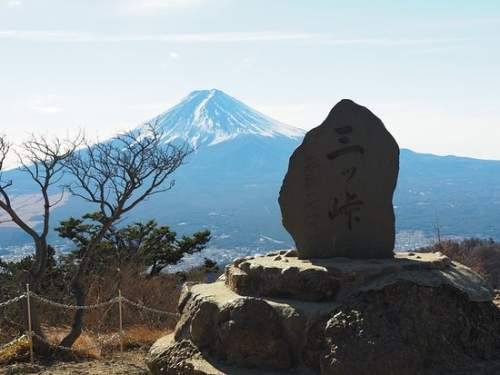
Mt. Mitsutoge Summit View
#2 Mt. Mitsutoge (Mount Mitsutoge)
Mt. Mitsutoge, located in Yamanashi prefecture where half of Mt. Fuji is located offers by far the best view of Mt. Fuji. The Mt. Mitsutoge summit is 1785m and it is a more difficult high than Mt. Mitake. The summit top of Mt. Mitsutoge offers 360 degree panoramic views of Mt. Fuji, Lake Kawaguchi and the surrounding areas. The hike is difficult in some places and is moderately long (4 – 6 hours return depending on your route choice) but is well worth it for the amazing views and the serenity at the top. There are several trials but starting from Mitsutoge Station trail and end the hike a Kawaguchi Lake us highly recommend if you have a full day: The descending Kawaguchi Lake trail passes through Mt. Shimoyama, Mt. Kinashiyama and Mt. Tenjo (Mt. Kachi Kachi), Before reaching Kawaguchi lake.
Access: Mitsutoge Station and Kawaguchi Stations are both accessible from Shinjuku Station using the JR Chou Line: Fully covered by the Japan Rail Pass.
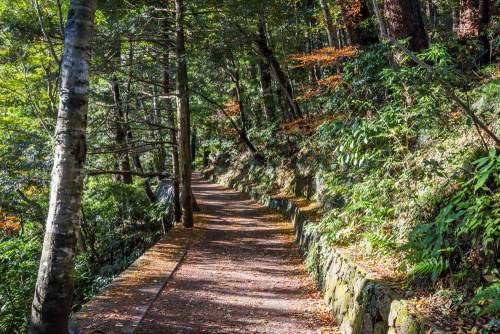
Mt. Takao Trail
#3 Mt. Takao (Mount Takao)
Just a one-hour trip west from Tokyo, the sacred Mt. Takao offers a unique blend of Japanese culture and beautiful nature. The area boasts a variety of hiking courses, historic temples and an exhilarating view from the summit.In 2007, the famous Michelin Travel Guide, named Mt. Takao a three-star winning mountain and one of the best places to discover the “real Japan”. Mt. Takao, designated as a national park forest state, is covered with a natural mixed forest of old aged coniferous, beech and broad-leaved trees which remain vertically untouched from ancient times. The area is especially beautiful in autumn when the leaves turn color.
The summit 600 meters above sea level provides an exhilarating panoramic scenery of Tokyo and the surrounding Kanto mountains of Chichibu, Nikko, Tanzawa, and Mt. Fuji on a clear day. There are six well-maintained hiking courses starting from the foot of Mt. Takao-san and leading up to the summit, each with a different theme, allowing visitors to learn about the nature of Takao. You can also ride halfway up the mountain by cable car or lift, so that the remaining climb to the top is not so difficult. Near the cable car terminal is the Takao-san Natural Zoo and Botanical Garden, where you will be greeted by monkeys that range freely throughout the area. Hiking on Mt.Takao is an all-year-round destination; After reaching the top serious hikers can continue on to Mt. Jinba (857m) for a whole day of hiking.
Access: Mt. Takao Station from Shinjuku Station using the JR Chou or Keio Line: Fully covered by the Japan Rail Pass

Mt. Jinba
#4 Mt. Jinba (Mount Jinba)
Mt. Jinba is located in nearby Kanagawa prefecture and is a higher (at 854 meters) mountain and more changing climb than the more famous Mt. Takao (at 599 meters). Even less people know that you can actually climb from Mt. Takao to Mt. Jinba (or vice versa) in one day. The 7-hour hike, is not as challenging as say a Mt. Fuji climb, however it is a longer hike (18 kms) and easy to get lost if you cannot read Japanese, so it is not recommended you try this trail alone, trying with someone that has done the trail before or getting a guide to go with you is best.
Access: Mt. Takao Station from Shinjuku Station using the JR Chou or Keio Line: than take bus to Jinba-Kogen-Shita bus stop and start you hike from here:

Mt. Tenjo (Mt. Kachi Kachi)
#5 Mt. Tenjo (Mount Tenjo)
Mt. Tenjo. also, known as Mt. Kachi Kachi is 1104m high and located in Yamanashi-prefecture, was already mentioned with #2 Mt. Mitsutoge. However, as it offers the closest and clearest views of Mt. Fuji, I would like to include this mountain as a completely separate climb; like Mt. Mitsutoge, Mt. Tenjo offers 360 degree panoramic views of Mt. Fuji, Lake Kawaguchi and the surrounding areas. However, Mt. Tenjo can be easily hiked in much less time around 3~4 hours, starting and ending from Kawaguchiko Station. The Mt. Fuji Panoramic Ropeway takes you near the peak of Mount Tenjo from the Eastern Shores of Lake Kawaguchiko however by doing so you miss many of the scenic viewpoints of Mt. Fuji accessible along the trail to the summit.
Access: Kawaguchi Station accessible from Shinjuku Station using the JR Chou Line: Fully covered by the Japan Rail Pass
A more difficult alternative includes Mt. Akadake at 2,899m Aka-dake is the highest peak of the Yatsuga-dake range: #mttakao, #mtjinba, #mtfujiviews #mttenjo, #mtmitake, #mtmitsutoge #mytokyoguide #mtfuji
For more information on Japan hikes please contact us at My Tokyo Guide
Posted in Japan Photos, Latest News, Mt. Fuji, Tokyo
Tagged Mount Fuji, Mt. Akadake, Mt. Fuji, Mt. Fuji Summit, Mt. Fuji Views, Mt. Jinba, Mt. Mitake, Mt. Mitsutoge, Mt. Takao, mytokyoguide
1 Comment
Mt. Fuji Original Climbing T-Shirt
With the outburst of the COVID-19 CORONAVIRUS PANDEMIC around the globe International travel and the 2020 Mt. Fuji climbing season seems like a far-removed fantasy.
Many have cancelled their summer travel plans to deal with the more immediate concerns at home. Whether the 2020 Mt. Fuji climbing season, which is still several months away – will be influenced by this pandemic still remains to been seen. Nevertheless, what is clear is that many would be Mt. Fuji climbers will not be able to make the trip to Japan this year due to the interruptions caused by this unprecedented pandemic.
Saying all this this year will be a particular difficult one for the world travel business in general especially for the small business that rely on travelers and local tours to pay their bills.
With no tours and oodles of time on our hands – we have spent our energy in to designing the ultimate Mt. Fuji T-Shirt for the upcoming 2020 Mt. Fuji climbing season.
The Final T-Shirt Design – which we changed again and again, incorporates many characters and colors of the Mt. Fuji culture and comes in both Navy and Light Gray Colors.

Unlike regular cotton T-Shirts our original T-Shirts are high quality 100% Polyester Ultralight fabric, Breathable, and quick drying, perfect hiking T-shirt to be worn when climbing Mt. Fuji.
These Mt. Fuji T-Shirts make for a great original Japan Gift and an Original Mt. Fuji souvenir.
Why is Mt. Fuji RED on the T-Shirt?
Red Fuji or is a unique phenomenon that occurs when the peak of Mt. Fuji shines a bright red color during the sunrise or sunset. (Called AKA Fuji in Japanese).
The Japanese artist Katsushika Hokusai (1760-1849) first made the RED-FUJI he well-known when he created the woodblock print series Thirty-six Views of Mount Fuji including Red Fuji (1832) called the “Fine Wind, Clear Morning” and the Great Wave off Kanagawa which are probably the two most recognized artworks of Japan and Mt. Fuji.
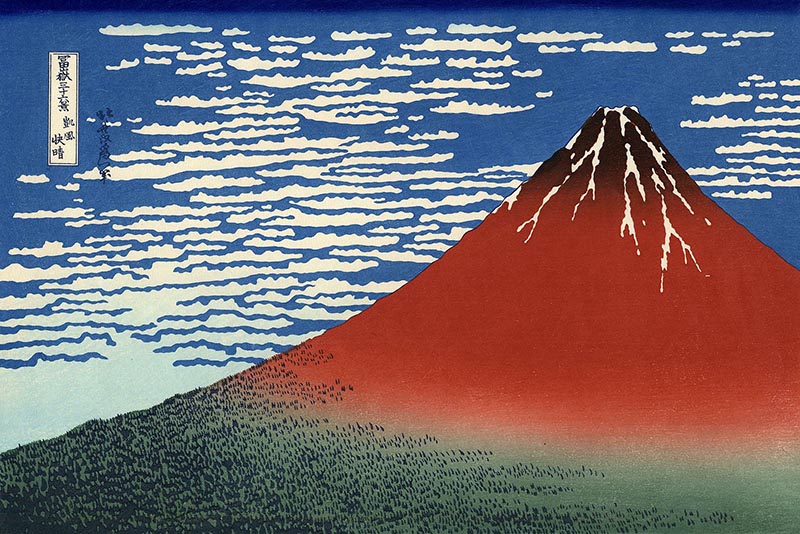
What do the Japanese Kanji mean on the T-Shirt?
FRONT Design:
Front Vertical Japanese Kanji – 富士山 – 世界文化遺産¥
Meaning: Mt. Fuji – World Cultural Heritage
BACK Design:
Back – Horizontal Japanese Kanji – 富士山 – 日本最高峰
Meaning: Mt. Fuji – Japan’s Highest Peak


Buy Now!
Note: Many assume Mt. Fuji is a natural world heritage site when in fact Japan’s highest and most celebrated peak is designated a “cultural world heritage” (On June 22, 2013) rather than a natural World Heritage due to its cultural significance – Mt. Fuji is often selected the theme of paintings, poems and literature – Mt. Fuji is also a spiritual source of worship and has been so for centuries.
These original Mt. Fuji T-Shirts are only available for purchase though our site and make for a great original Japan souvenir and gift! It’s a good idea to order your T-shirt now before you climb Mt. Fuji.
To order or find more information about our limited-edition Mt. Fuji T-Shirts please click on our logo below: Availability is limited so order while supply lasts.
Buy Now!
Posted in Latest News, Mt. Fuji, Mt. Fuji Climbing, Tokyo
Tagged Hiking, Hiking Clothes, Japan, Japan Souvenirs, Japan T-Shirts, Japan travel, Limited Edition T-Shirts, Mount Fuji Climb, Mount Fuji Climbs, Mountains, Mt. Fuji, Mt. Fuji Climbs, Mt. Fuji Souvenir, Mt. Fuji Souvenirs, Original T-Shirts, RED FUJI, Travel
Leave a comment
Tokyo Cherry Blossom & Spring Hiking
The weather is finally getting warming in Tokyo and throughout Japan, which means the Sakura Cherry Flowers will soon blossom and the mountains will soon be bursting with weekend hikers and full time explorers.

Check out the latest Cherry Blossom 2019 Forecast
Top 10 Spots to View Cherry Blossoms in Tokyo
Tokyo’s Best Cherry Blossom Tours
Best Cherry Blossoms sites in Japan
Also with the rising temperature more and more individuals tend to exploring the mountain areas in Japan. Although Mt. Fuji is not available for 2-Day hikes until June and 1-Day hikes until May there are many other mountains around Japan that are available to hike in Spring.
- Can’t wait until the Mt.Fuji Climbing Season?
- See our Top 5 Mountains to climb in Spring with Views of Mt. Fuji
- Here are 5 recommended mountains to hike with the views of Mt.Fuji!

Speaking of Mt. Fuji, now is the time to start your Mt. Fuji Planning. Conquering Mt. Fuji is at the top of many people’s bucket lists and with the climbing season only a couple of months away, it is not too early to begin planning for your 2019 Mt. Fuji climb. Planning ahead will help you make the right choices and there are several key points to consider when planning your Mt. Fuji climb:
- See some our our top Climbing tips below:
- How Hard is it to Climb Mt. Fuji Really?
See our 3 step Mt. Fuji Climbing Tips and Mt. Fuji Climbing Map Below
- Step 1: Mt. Fuji Climbing – Plan Ahead
- Step 2: Mt. Fuji Climbing – Access Point
- Step 3: Mt. Fuji Climbing – Select a Route
- Mt. Fuji Climbing Route Map
 There are numerous day hikes to enjoy the unique natural ecosystem all year round. Including Hoei Crater hike, Mt. Fuji Pilgrim hike, Mt. Kachi Kachi hike and for those climbers in top physical condition a 1-Day Summit hike is also possible during the climbing season.
There are numerous day hikes to enjoy the unique natural ecosystem all year round. Including Hoei Crater hike, Mt. Fuji Pilgrim hike, Mt. Kachi Kachi hike and for those climbers in top physical condition a 1-Day Summit hike is also possible during the climbing season.
- Can Mt. Fuji be climbed in 1-Day?
- Mt. Fuji 1-Day Hikes
For more information on Mt. Fuji Hikes, Cherry Blossom Tours please Contact Us:
#mytokyoguide #cherryblossomtours #mtfujihikes #mtfujisummithikes #mtfujioffseasonclimb
Posted in Japan Photos, Latest News, Mt. Fuji, Tokyo
Tagged 1-Day Mt. Fuji Summit Hike, Cherry Blossom Forecast, Cherry Blossom Map, Cherry Blossom Season in Japan, Cherry Blossom Tours, Japan Spring Hikes, Mt. Fuji, Mt. Fuji May Hikes, Mt. Fuji Off-Season Hikes, Mt. Takao Hiking Tours, mtfujioffseason, Tokyo Tour
Leave a comment
Mt. Fuji Climbing Point Access
Getting to Mt. Fuji:
 Numerous first timers to Japan often make the same mistake, assuming Mt. Fuji is easily accessible, when in fact most do not understand the vast area Mt. Fuji actually covers and often fail to plan accordingly. The Fuji-Hakone-Izu National Park is 1,227 square kilometers, larger than both the area of Singapore or Hong Kong.
Numerous first timers to Japan often make the same mistake, assuming Mt. Fuji is easily accessible, when in fact most do not understand the vast area Mt. Fuji actually covers and often fail to plan accordingly. The Fuji-Hakone-Izu National Park is 1,227 square kilometers, larger than both the area of Singapore or Hong Kong.
There are four distinctive climbing routes on Mt. Fuji and several different ways to access these Mt. Fuji climbing routes. For the purpose of climbing Mt. Fuji, there are three Key Access Points:
1.North Mt. Fuji – Kawaguchi Lake Station Access Point:
– You get can to here by Bus or Local JR Train
– From Kawaguchi Lake Station, there are regular buses to the Yoshida Trail 5th Station
2. East Mt. Fuji – Gotemba Station Access Point:
– You can get here by Romance car or local JR train or Bus.
– From Gotemba Station there are climbing buses to the Gotemba and Fujinomiya 5th stations
3. South Mt. Fuji – Shin-Fuji Station Access Point
– This is the only area on Mt. Fuji you can access by bullet Train
– You can get there by Bullet Train from Kyoto, Tokyo, Yokohama and Hakone (Odawara)
– From Shin-Fuji Station there are climbing buses to the Fujinomiya 5th station (Summer Only)

Using the South Access Point: There are Bullet Train Climbs available during the summer climb season.
Mt. Fuji Bullet Train Climbs
Climbing Mt. Fuji is hard enough without having to wait in traffic, the journey to or from Mt. Fuji from Tokyo can take up to 3hrs in peak summer traffic. On the other hand, the super-fast bullet train only takes 50 mins and there is never any traffic. Relax in the perfectly spotless, comfortable bullet train after your Mt. Fuji climb. Your special transport will meet you at the Mt. Fuji bullet train station and take you direct to Mt. Fuji 5th station, after your climb adventure your transport will return you to the Mt. Fuji bullet train station so you can continue your journey of exploring Japan.

Tour Notes:
* Mt. Fuji climbs are available from May to Oct:
* For more information on Mt. Fuji Climbs please Contact Us:
Posted in Latest News, Mt. Fuji, Tokyo
Tagged Mt. Fuji, Mt. Fuji Access, Mt. Fuji Climbing Tips, Mt. Fuji Climbing Tours, Mt. Fuji Climbs
1 Comment
New My Tokyo Guide Website
We are excited to announce that our new and refreshed website is live. The newly updated My Tokyo Guide site focuses on what we do best, Outdoor adventures and Mt. Fuji Climbs and Tours. View Announcement in your Browser at https://bit.ly/2GfKHBH

We encourage adventures to contact us through the website and sign up for our climbing newsletter at Climbing Mt. Fuji
Accepting Reservations
We are also now accepting reservations for the 2019 Mt. Fuji Climbing, 2019 Japan Tour, 2019 Japan Ski Season! Continue to My Tokyo Guide or all details.
Posted in Tokyo
Leave a comment
Climbing Mt. Fuji “The Complete Guidebook”

The 4th Edition of Climbing Mt. Fuji ” A Complete Guidebook” is a “must read” for anyone who wishes to be successful in climbing Mt. Fuji. Don’t be fooled by the apparent simplicity of the mountain – it is a tough and grueling climb and the guidebook explains all there is to know about it. The guidebook is a comprehensive and easy to read recipe for what it takes physically and psychologically to get to the summit of this amazing but unpredictable mountain. The guidebook covers all facets of preparation, equipment, training and most importantly, altitude.
The 4th edition of Climbing Mt. Fuji ” A Complete Guidebook” is your complete preparation package and the only guidebook you will need to design your Mt. Fuji climb. As a way of saying “Thank you” we have teamed up with our Mt. Fuji partners to offer special Mt. Fuji climbing discounts to those who purchase the latest edition of the Climbing Mt. Fuji Guidebook. Each partner is unique and located in a different area or route on Mt. Fuji. Discounts are available on selected Mt. Fuji mountain huts, hiking rentals, hot springs, walking sticks and selected meals. Please refer to “Climbing Mt. Fuji Discount Coupons” on page 131 for more information.
Available on Amazon.com Amazon




















